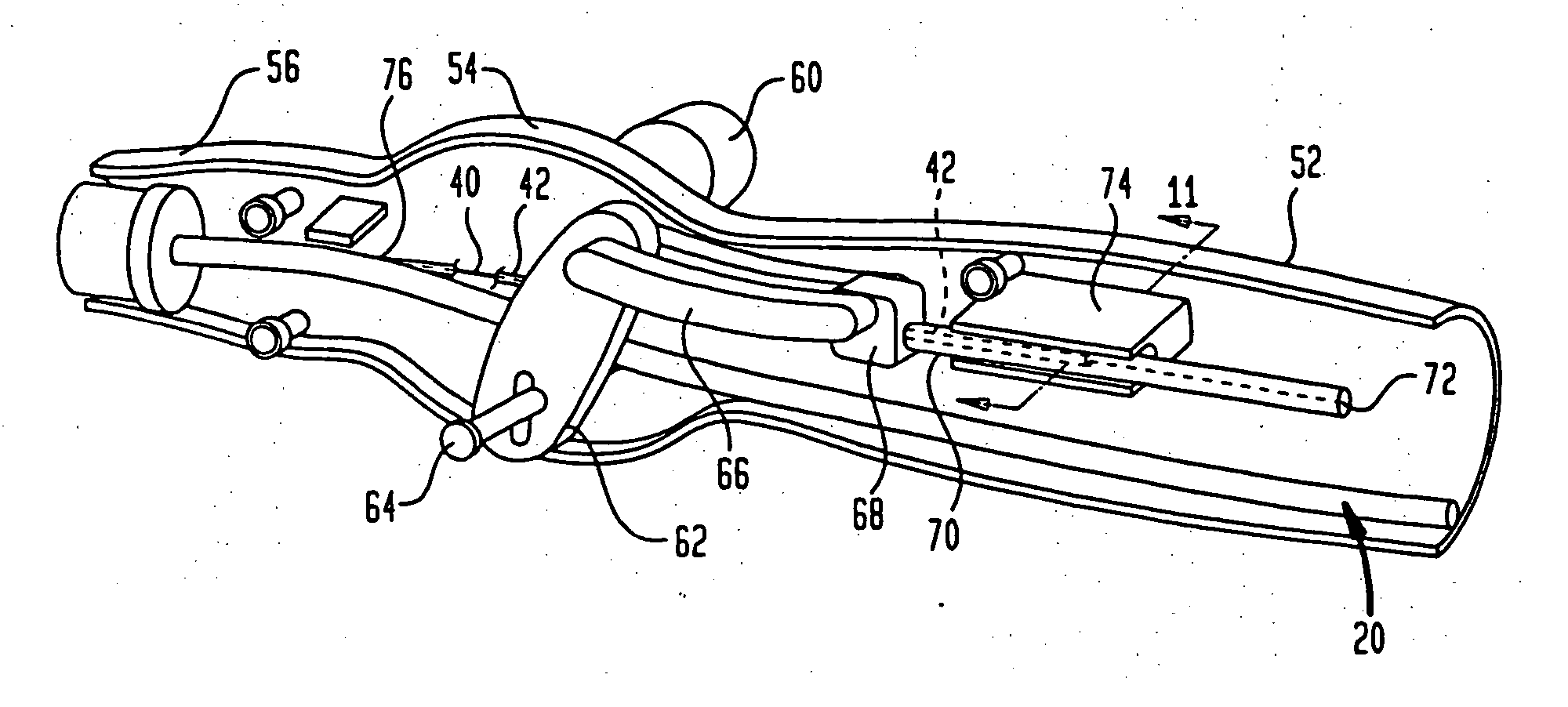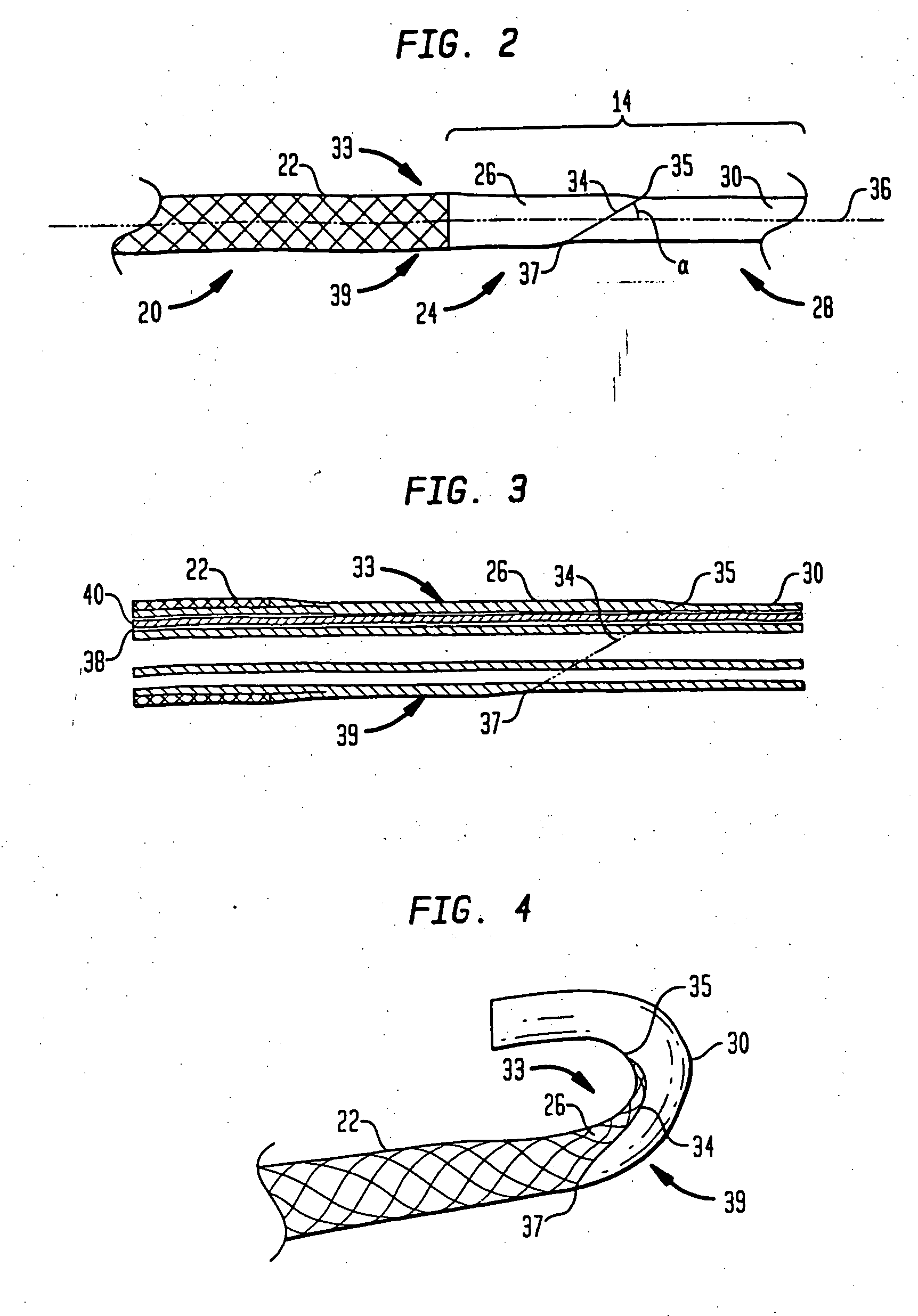Steerable catheter
a technology of steerable catheters and wires, which is applied in the field of steering, responsiveness and kink resistance of steerable catheters, can solve the problems of pulling wires to bend, the connection point of the wires to the steering mechanism is not linearly aligned, and the distal end of the catheter to bend, etc., to achieve the effect of minimizing friction
- Summary
- Abstract
- Description
- Claims
- Application Information
AI Technical Summary
Benefits of technology
Problems solved by technology
Method used
Image
Examples
Embodiment Construction
[0028] In order to define spatial relationships between the parts of a medical instrument, as used in this disclosure, the term “distal” refers to an area which is closer to the body of the patient, or inserted first into the body of the patient and penetrates to the greatest depth within the body. The term “proximal” refers to an area opposite the distal area.
[0029] Referring to FIG. 1, the apparatus according to one embodiment of the invention is a catheter, generally identified as 10, having a generally depicted steering device 18 on its proximal end 12, an insertable catheter portion 13 which gets inserted into a subject, such as into a chamber 2 of the subject's heart 1, a steering portion 14 and a distal end 16.
[0030] The distal end 16 of the catheter 10 may house various tools and instruments 17 that facilitate the execution of different procedures, such as surgical ablation for example, at a target location in a subject. The distal end 16 is manipulated via the steering de...
PUM
 Login to View More
Login to View More Abstract
Description
Claims
Application Information
 Login to View More
Login to View More - R&D
- Intellectual Property
- Life Sciences
- Materials
- Tech Scout
- Unparalleled Data Quality
- Higher Quality Content
- 60% Fewer Hallucinations
Browse by: Latest US Patents, China's latest patents, Technical Efficacy Thesaurus, Application Domain, Technology Topic, Popular Technical Reports.
© 2025 PatSnap. All rights reserved.Legal|Privacy policy|Modern Slavery Act Transparency Statement|Sitemap|About US| Contact US: help@patsnap.com



